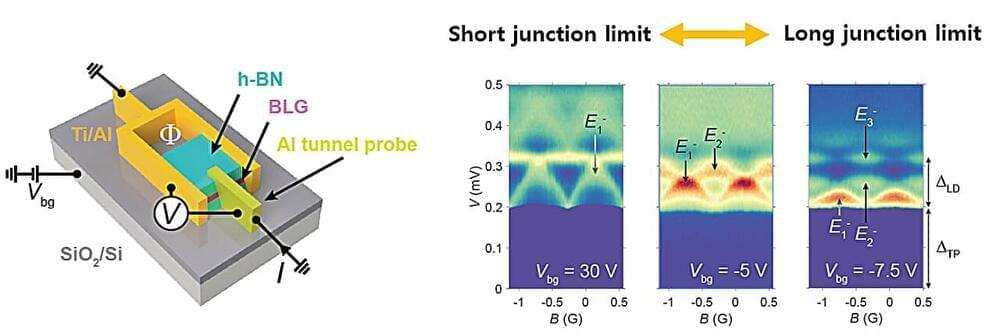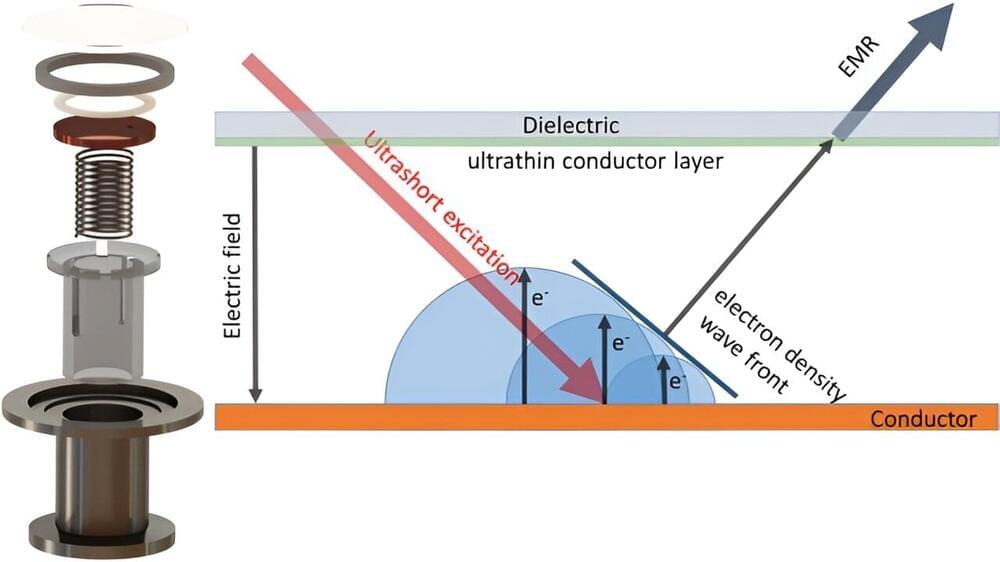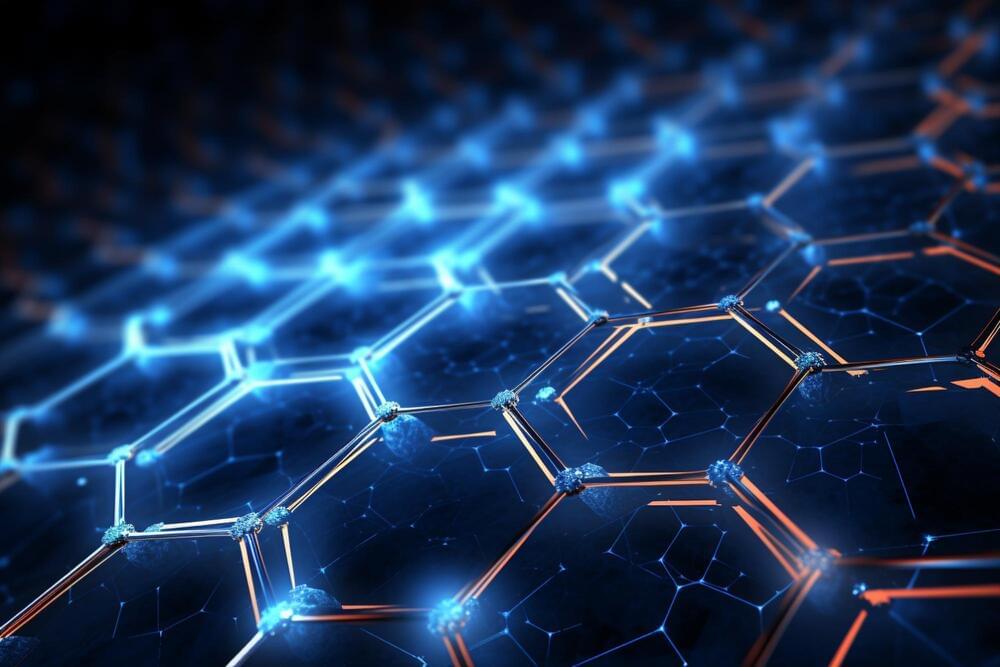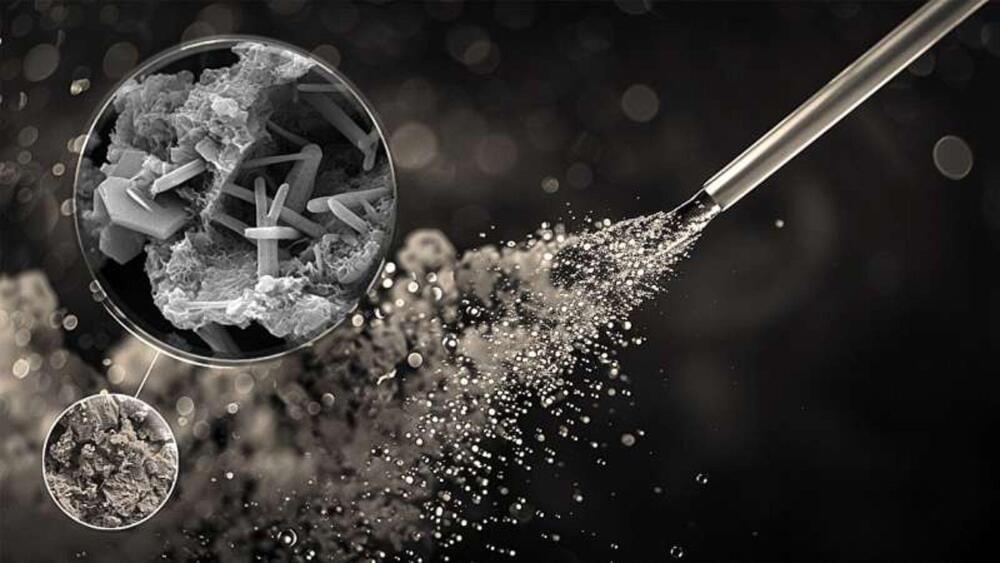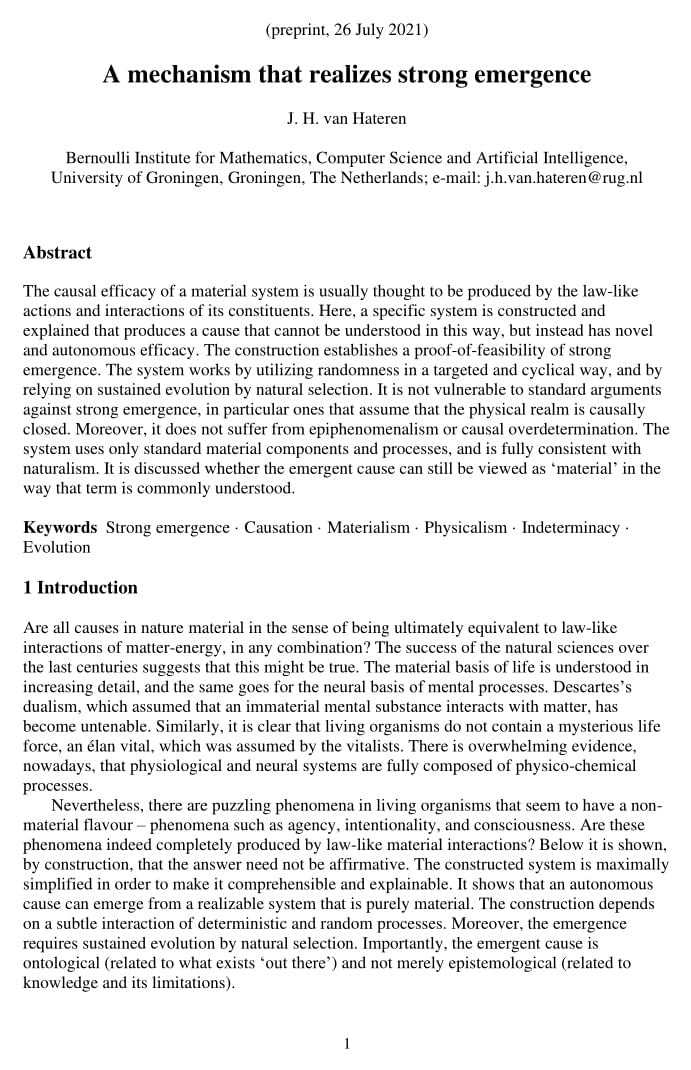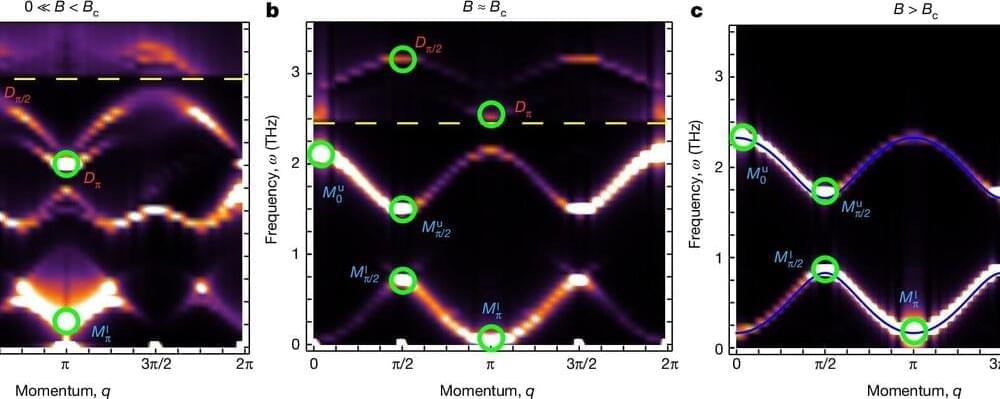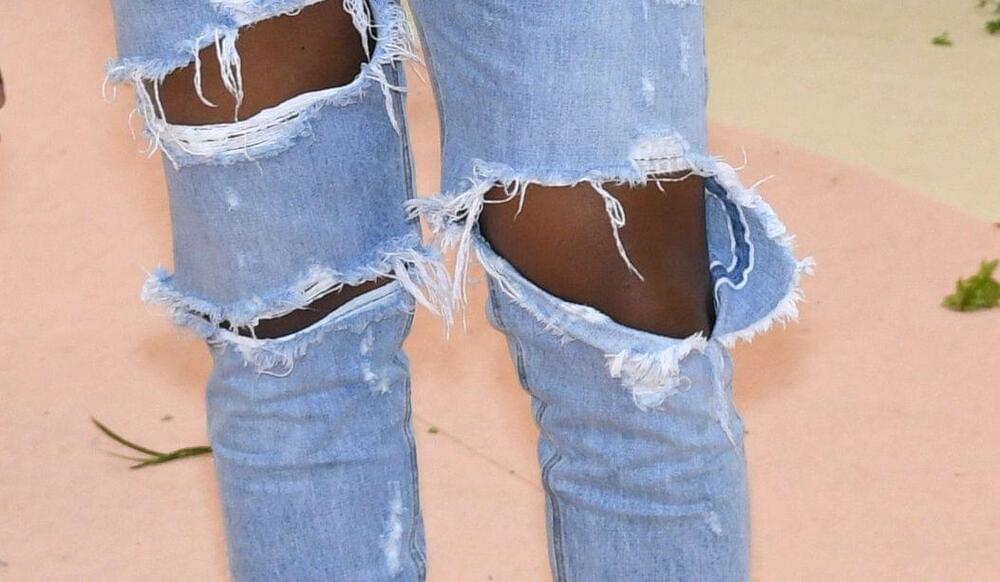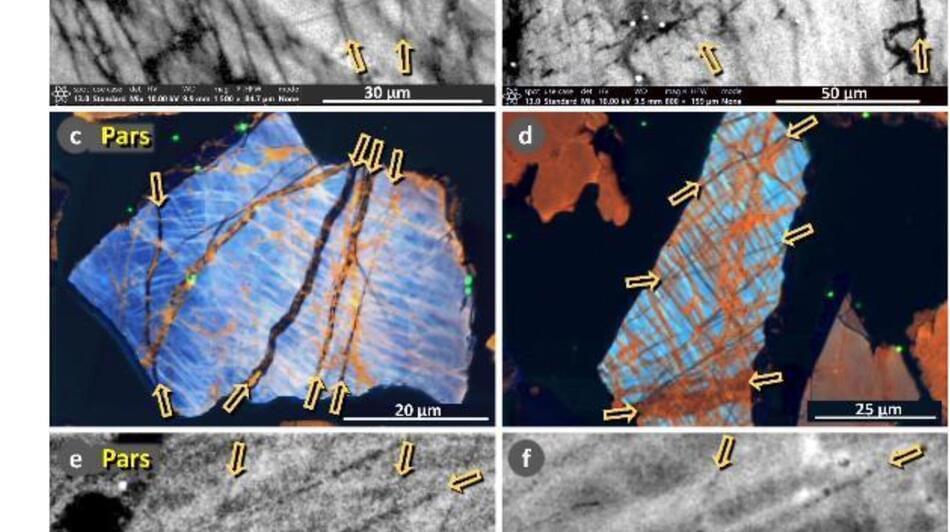Jul 1, 2024
A new method to control quantum bound states in superconducting device
Posted by Saúl Morales Rodriguéz in categories: materials, quantum physics
Researchers have successfully controlled the quantum mechanical properties of Andreev bound states in bilayer graphene-based Josephson junctions using gate voltage. Their research is published in Physical Review Letters. The research team includes Professors Gil-Ho Lee and Gil Young Cho from the Department of Physics at Pohang University of Science and Technology (POSTECH) in South Korea in collaboration with Dr. Kenji Watanabe and Dr. Takashi Taniguchi from National Institute for Materials Science (NIMS) in Japan.
Superconductors are materials that exhibit zero electrical resistance under specific conditions such as extremely low temperatures or high pressures. When a very thin normal conductor is placed between two superconductors, a supercurrent flows through the normal conductor due to the proximity effect where superconductivity extends into the normal conductor. This device is known as a Josephson junction.
Within the normal conductor, new quantum states called Andreev bound states are formed, which are crucial for mediating the supercurrent flow.
